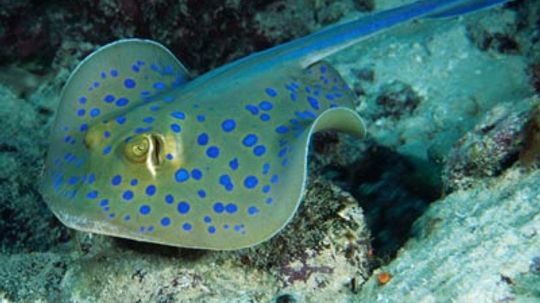With their enigmatic nature and graceful movements, stingrays have long captivated the curiosity of marine enthusiasts. However, beneath their seemingly serene exterior lies a deadly arsenal that allows them to swiftly incapacitate their prey. In this article, we delve into the intricate mechanisms employed by these fascinating creatures to secure their next meal.
Anatomy and Hunting Techniques
Stingrays possess a unique anatomy that enables them to effectively hunt and subdue their prey. Their flat bodies are adorned with venomous spines located at the base of their tails, which can inflict excruciating pain upon contact. These spines serve as both weapons for defense against predators and tools for capturing food.
When hunting, stingrays utilize an ambush strategy combined with lightning-fast reflexes. They bury themselves in sandy or muddy ocean floors, leaving only their eyes visible above the surface. This camouflage allows them to remain undetected while patiently awaiting unsuspecting prey.
Once a potential meal comes within striking distance, stingrays employ remarkable agility to launch themselves towards it with astonishing speed. Using powerful strokes from their pectoral fins – which span up to several feet in width – they propel themselves forward like underwater gliders.
Venomous Strikes: A Deadly Weapon
The venomous barbs possessed by stingrays are not merely defensive measures; they also play a crucial role in securing sustenance. When threatened or during an attack on prey, these formidable creatures whip around using rapid lateral movements of their tails – delivering potent strikes capable of injecting venom into unfortunate victims.
Their venom contains various toxins that disrupt normal bodily functions and induce intense pain upon injection. Moreover, some species possess specialized enzymes within this toxic cocktail that break down tissues rapidly, further incapacitating their prey. This combination of venomous potency and tissue degradation ensures that stingrays can swiftly immobilize even larger organisms.
Ecological Significance
Beyond their lethal hunting tactics, stingrays hold significant ecological importance within marine ecosystems. As opportunistic feeders, they help maintain balance by controlling populations of smaller fish and invertebrates. Additionally, through the process of bioturbation – stirring up sediment while foraging – they contribute to nutrient cycling and oxygenation of oceanic habitats.
In conclusion, the enigmatic nature of stingrays is accompanied by a deadly prowess when it comes to securing sustenance. Their unique anatomy, lightning-fast reflexes, and venomous strikes make them formidable hunters in the underwater realm. Understanding these fascinating creatures not only deepens our appreciation for their intricate adaptations but also sheds light on the delicate balance maintained within marine ecosystems.
